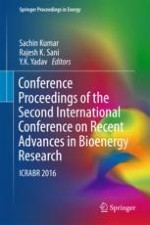2018 | OriginalPaper | Chapter
13. Sequencing Batch Reactor Technique for Municipal Sewage Treatment with Carbon Credits
Authors : R. R. Marlar, Vigneshwaran Aiyappan, S. S. Rao, S. Bajpai
Published in: Conference Proceedings of the Second International Conference on Recent Advances in Bioenergy Research
Publisher: Springer Singapore
Activate our intelligent search to find suitable subject content or patents.
Select sections of text to find matching patents with Artificial Intelligence. powered by
Select sections of text to find additional relevant content using AI-assisted search. powered by
